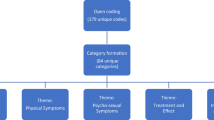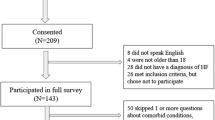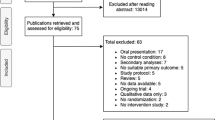Abstract
Hard flaccid (HF) syndrome is a complex symptom that significantly impacts a man’s sexual and social life. Since there is currently only one case series available in the literature regarding HF syndrome, it has not been recognized as a real medical condition. HF syndrome has mostly been reported in several patient forums and its exact definition, prevalence, etiology, and treatment are unknown. We hereby, aimed to understand the nature of HF syndrome and how it is perceived among men. Online forum sites in the English language were systematically evaluated to perform a descriptive qualitative assessment. “Hard flaccid; forum” term was searched in Google® and data were collected from forum posts. Datasets were analyzed using thematic analysis within a three-month period (September 2018–November 2018) and were combined to triangulate analysis. A total of 12 forum discussions, containing 6150 comments, were analyzed. Themes that arose included: “I would like to ensure that I have HF”; “How did I end up like this?”; “Seeking support for treatment choices – who will help me?”; “How can I cope with this condition?”. Thematic analysis revealed that most HF cases began after a traumatic event. The reported incidence of HF-related symptoms varies considerably. The most commonly associated symptoms of HF are penile semi-hardness in the flaccid state, penile sensory changes, erectile dysfunction, and emotional distress. Although it is not recognized by major medical authorities, many men appear to suffer from symptoms related to HF syndrome. Future basic science and clinical studies must be conducted to understand the exact pathophysiology of HF syndrome and to develop effective therapies.
This is a preview of subscription content, access via your institution
Access options
Subscribe to this journal
Receive 8 print issues and online access
$259.00 per year
only $32.38 per issue
Buy this article
- Purchase on Springer Link
- Instant access to full article PDF
Prices may be subject to local taxes which are calculated during checkout


Similar content being viewed by others
References
Laumann EO, Nicolosi A, Glasser DB, Paik A, Gingell C, Moreira E, et al. Sexual problems among women and men aged 40–80 y: prevalence and correlates identified in the Global Study of Sexual Attitudes and Behaviors. Int J Impot Res. 2005;17:39–57.
Braun M, Wassmer G, Klotz T, Reifenrath B, Mathers M, Engelmann U. Epidemiology of erectile dysfunction: results of the ‘Cologne Male Survey’. Int J Impot Res. 2000;12:305–11.
Porst H, Montorsi F, Rosen RC, Gaynor L, Grupe S, Alexander J. The Premature Ejaculation Prevalence and Attitudes (PEPA) survey: prevalence, comorbidities, and professional help-seeking. Eur Urol. 2007;51:816–23.
Balon R. Burden of sexual dysfunction. J Sex Marital Ther. 2017;43:49–55.
Gül M, Towe M, Yafi F, Serefoglu EC. Hard flaccid syndrome: initial report of four cases. Int J Impot Res. 2019. https://doi.org/10.1038/s41443-019-0133-z.
Hughes K, Parnham A, Lucky M. Hard flaccid syndrome. Urology News. 2018. https://www.urologynews.uk.com/features/synopsis/post/hard-flaccid-syndrome. Accessed 9 Mar 2019.
Jamison J, Sutton S, Mant J, De Simoni A. Online stroke forum as source of data for qualitative research: insights from a comparison with patients’ interviews. BMJ Open. 2018. https://doi.org/10.1136/bmjopen-2017-020133.
Eysenbach G, Wyatt J. Using the Internet for surveys and health research. J Med Internet Res. 2002;4:E13.
Im E-O, Chee W. An online forum as a qualitative research method: practical issues. Nurs Res. 2006;55:267–73.
Mays N, Pope C. Rigour and qualitative research. BMJ. 1995;311:109–12.
Im E-O, Chee W. Practical guidelines for qualitative research using online forums. Comput Inf Nurs. 2012;30:604–11.
Alinia H, Moradi Tuchayi S, Farhangian ME, Huang KE, Taylor SL, Kuo S, et al. Rosacea patients seeking advice: qualitative analysis of patients’ posts on a rosacea support forum. J Dermatol Treat. 2016;27:99–102.
McKechnie V, Barker C, Stott J. The effectiveness of an Internet support forum for carers of people with dementia: a pre-post cohort study. J Med Internet Res. 2014;16:e68.
Sandelowski M. Whatever happened to qualitative description? Res Nurs Health. 2000;23:334–40.
Im E-O, Lee BI, Chee W, Dormire S, Brown A. A national multiethnic online forum study on menopausal symptom experience. Nurs Res. 2010;59:26–33.
Beck CT. Routledge international handbook of qualitative nursing research. Abingdon: Routledge; 2013.
Petrovska K, Sheehan A, Homer CSE. The fact and the fiction: a prospective study of Internet forum discussions on vaginal breech birth. Women Birth. 2017;30:e96–102.
Eastham LA. Research using blogs for data: public documents or private musings? Res Nurs Health. 2011;34:353–61.
Wang L, Wang J, Wang M, Li Y, Liang Y, Xu D. Using Internet search engines to obtain medical information: a comparative study. J Med Internet Res. 2012. https://doi.org/10.2196/jmir.1943.
Maguire M, Delahunt B. Doing a thematic analysis: a practical, step-by-step guide for learning and teaching scholars. AISHE J. 2017;9:3351–33514. http://ojs.aishe.org/index.php/aishe-j/article/view/335/553.
Dahlen HG, Homer CSE. ‘Motherbirth or childbirth’? A prospective analysis of vaginal birth after caesarean blogs. Midwifery. 2013;29:167–73.
Hanna E, Gough B. Emoting infertility online: a qualitative analysis of men’s forum posts. Health (Lond). 2016;20:363–82.
Okolokulak E, Volchkevich D. Vascularization of the male penis. Rocz Akad Med Bialymst. 2004;49:285–91.
Shoskes DA. The challenge of erectile dysfunction in the man with chronic prostatitis/chronic pelvic pain syndrome. Curr Urol Rep. 2012;13:263–7.
Sommer F, König D, Graft C, Schwarzer U, Bertram C, Klotz T, et al. Impotence and genital numbness in cyclists. Int J Sports Med. 2001;22:410–3.
Wu AK, Lue TF. Commentary on high flow, non-ischemic, priapism. Transl Androl Urol. 2012;1:109–12.
Oberpenning F, Roth S, Leusmann DB, van Ahlen H, Hertle L. The Alcock syndrome: temporary penile insensitivity due to compression of the pudendal nerve within the Alcock canal. J Urol. 1994;151:423–5.
Silbert PL, Dunne JW, Edis RH, Stewart-Wynne EG. Bicycling induced pudendal nerve pressure neuropathy. Clin Exp Neurol. 1991;28:191–6.
Awad MA, Gaither TW, Murphy GP, Chumnarnsongkhroh T, Metzler I, Sanford T, et al. Cycling, and male sexual and urinary function: results from a large, multinational, cross-sectional study. J Urol. 2018;199:798–804.
Gerstenberg TC, Levin RJ, Wagner G. Erection and ejaculation in man. Assessment of the electromyographic activity of the bulbocavernosus and ischiocavernosus muscles. Br J Urol. 1990;65:395–402.
Lavoisier P, Courtois F, Barres D, Blanchard M. Correlation between intracavernous pressure and contraction of the ischiocavernosus muscle in man. J Urol. 1986;136:936–9.
Krieger JN, Nyberg L, Nickel JC. NIH consensus definition and classification of prostatitis. JAMA. 1999;282:236–7.
Engeler D, Baranowski AP, Borovicka J, Cottrell AM, Dinis-Oliveira P, Elneil S, et al. European Association of Urology Guidelines. 2018 Edition. European Association of Urology Guidelines Office, 2018. http://uroweb.org/guideline/chronic-pelvic-pain/.
Acknowledgements
The authors acknowledge the participants for their cooperation.
Author information
Authors and Affiliations
Corresponding author
Ethics declarations
Conflict of interest
The authors declare that they have no conflict of interest.
Additional information
Publisher’s note: Springer Nature remains neutral with regard to jurisdictional claims in published maps and institutional affiliations.
Rights and permissions
About this article
Cite this article
Gul, M., Huynh, L.M., El-Khatib, F.M. et al. A qualitative analysis of Internet forum discussions on hard flaccid syndrome. Int J Impot Res 32, 503–509 (2020). https://doi.org/10.1038/s41443-019-0151-x
Received:
Revised:
Accepted:
Published:
Issue Date:
DOI: https://doi.org/10.1038/s41443-019-0151-x
This article is cited by
-
Hard flaccid syndrome symptoms, comorbidities, and self-reported efficacy and satisfaction of treatments: a cross-sectional survey
International Journal of Impotence Research (2024)
-
A clinical guide to rare male sexual disorders
Nature Reviews Urology (2024)
-
YouTube is inadequate as an information source on delayed ejaculation
International Journal of Impotence Research (2023)
-
Comment on “A systematic evaluation of YouTube as an information source for male infertility”
International Journal of Impotence Research (2021)
-
Hard flaccid syndrome: state of current knowledge
Basic and Clinical Andrology (2020)



